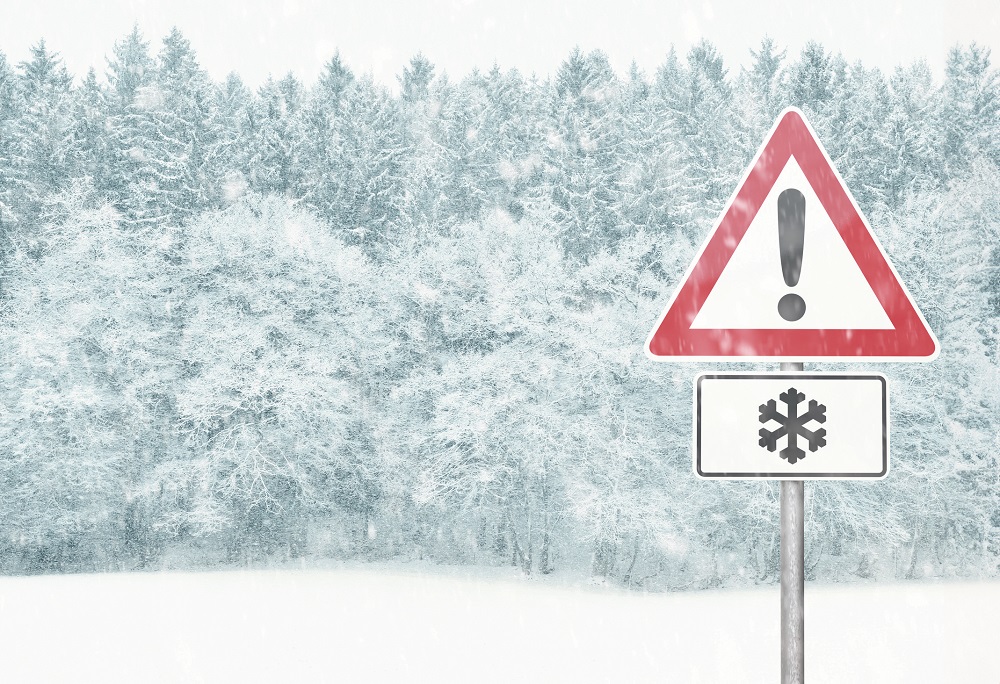Winter can be an especially dangerous season. But knowing about the common hazards can help you take precautions to protect yourself from a visit to the ER during the colder months…
- Shoveling snow. Don’t risk clearing a path or your driveway if you aren’t used to heavy-duty cardio and especially if you have any kind of heart condition. This level of exertion can result in a heart attack.

- Car accidents. When roads are wet, icy or snow-covered, keep extra distance between your vehicle and the one in front of yours to reduce risk for a collision. Significantly reduce your speed—cars can slip on hard-to-see black ice. Even better: If you don’t have to drive, don’t. If you must drive, wait until conditions improve or the temperature rises enough to melt any ice.
- Slips on icy paths. Any fall can lead to a serious injury from a broken wrist, ankle or hip to head trauma. Prepare in advance—before a storm, put down a dense layer of salt on any paths around your home. Check that handrails on outside stairs are secure. Upgrade footwear to boots with nonskid soles.
- Falls from ladders. These falls can result in severe head trauma, even paralysis. When putting up holiday decorations, leave the second story and higher to trained professionals. If you must get on a ladder, make sure it’s secure and that someone strong is holding the base. Be creative—instead of stringing lights, project them onto your house from the ground.
- Falling icicles. They are pretty when they catch the light, but icicles can break off and cut you like a dagger. Never walk under them and, as often as needed, use a broomstick to break them off overhangs.
- Hypothermia. Prolonged exposure to low temperatures can cause your body temperature to drop to an unsafe level. At greatest risk are the very young and seniors whose bodies are less able to regulate their temperature. First sign of hypothermia: Fast shaking as your muscles contract to generate heat. As it gets worse, the shaking stops—that is a sign that all body systems are affected. Confusion, exhaustion and slurred speech may follow. Get indoors as soon as you can. If you (or a loved one) is experiencing signs of hypothermia, call 911. While waiting for help to arrive, wrap yourself in blankets and drink hot liquids.
- Frostbite. This is a more localized reaction to exposure to very cold temperatures. Fingers, toes, ears and nose are most at risk. First signs: Painful sensation like pins and needles—those are your nerve fibers warning you to get someplace warmer. Then parts of your body will start to feel numb. Similar to a severe burn, frostbite needs emergency treatment. If you must be out in frigid weather: Wear a hat, mittens, heavy socks and boots, and a scarf to cover your mouth and nose. If you suspect frostbite: Get to the ER for evaluation right away.

- House fires. Never leave candles or a wood-burning fireplace unattended. If there are children in the house, fireplaces should have fire-proof screens. Wood stoves should be professionally installed and bricked off. Never leave paper or other flammable materials anywhere near fireplaces or stoves. Don’t burn open fires indoors because they will give off carbon monoxide. If you must use a space heater: Keep it at least three feet away from anything flammable—furniture, curtains and bedding, etc. Do not plug them into a powerstrip or surge protector.
- Carbon monoxide poisoning. Fireplaces, wood and gas stoves, and gas appliances that aren’t properly maintained or vented can emit this odorless and deadly gas into your home. Warning signs of carbon monoxide poisoning: Flu-like symptoms that include headache, weakness, nausea or vomiting, dizziness or confusion, and/or blurred vision. If a few people in your house start to experience the same symptoms, get out immediately and call 911 or your utility company to do an inspection. Prevention: Place smoke detectors and battery-operated carbon monoxide detectors near these appliances. Have your chimneys and flues inspected and cleaned by a licensed chimney sweep every year. Never use an outdoor grill or stove to heat your home.
- Being stranded in your vehicle. Beside winterizing your car—filling up on antifreeze, checking wiper blades and changing to snow tires if needed—keep emergency essentials in your trunk. Include extra jackets, gloves, hats and socks…a first-aid kit…water and nonperishable snacks…an ice scraper and a bag of kitty litter to provide traction in case your vehicle gets stuck…and keep a spare phone charger in the glove compartment.



